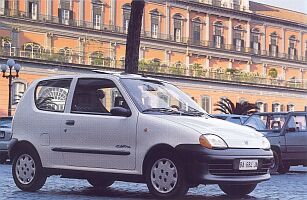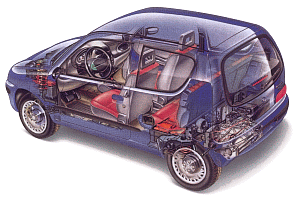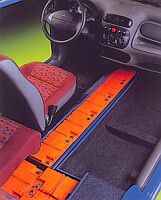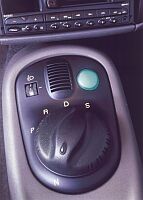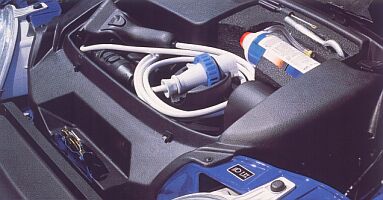Presented in March
1998, the Seicento Elettra is designed as a zero-emissions-vehicle (ZEV)
for urban use. It maintains the four-seat capability of the standard Seicento,
plus a slightly reduced rear luggage area.
The drive to the rear wheels is by a three-phase,
alternating-current asynchronous motor positioned under the rear of the
car. Maximum power is 30kW (15kW continuous power) and maximum torque is
123 Nm. The top speed is 100km/h.
The battery pack consists of eighteen maintenance-free
12V lead-acid units connected in series with a total weight of 400kg. They
are positioned under the bonnet, within the central tunnel and beneath
the rear seats. A range of 90km is possible, with a full recharge requiring
about 8 hours using the onboard charger connected to normal mains power.
The main driving controls are the brake
and accelerator, no clutch being present. A multi-position switch enables
selection of N (neutral), P (park), R (reverse), D (drive) and S (Speed).
Neutral deactivates the controls without locking the wheels, whilst park
activates a mechanical brake system. Drive and reverse are the normal positions,
whilst speed gives a higher performance (obviously at the expense of range).
The insrument binnacle includes a battery level indicator and an 'ecenometer'
which shows the instantaneous drain on the battery, enabling more economic
driving if required.
Under the bonnet there are the charging
cable, a puncture repair spray and some tools. The heating system uses
a small diesel powered burner. Low friction tyres are fitted, as are two
horns to warn people and cars, since there is negligible noise from the car.
